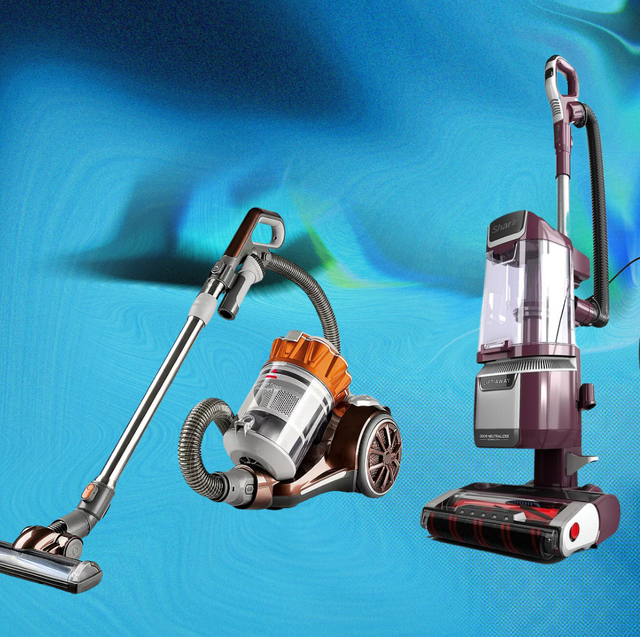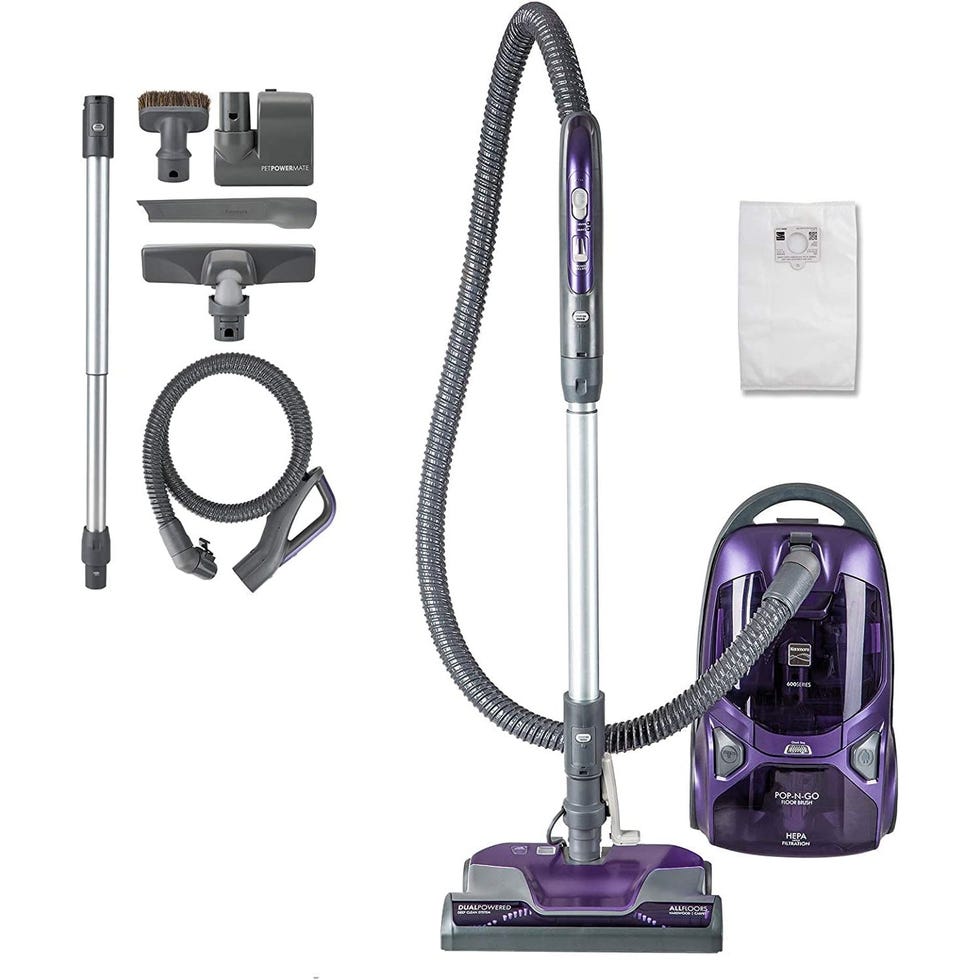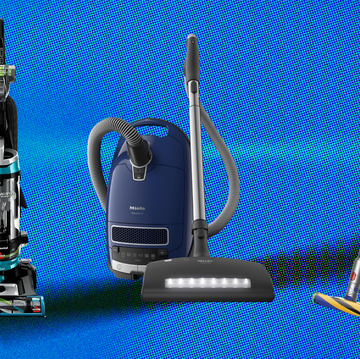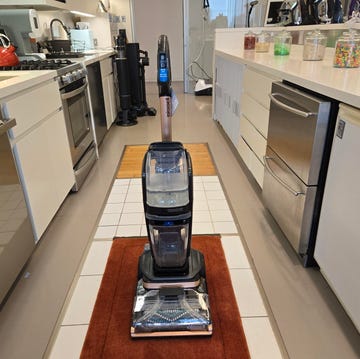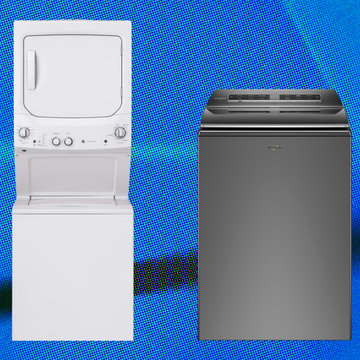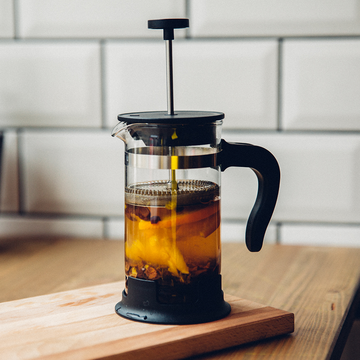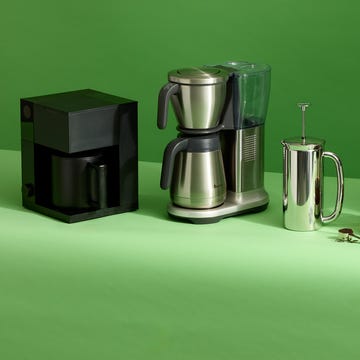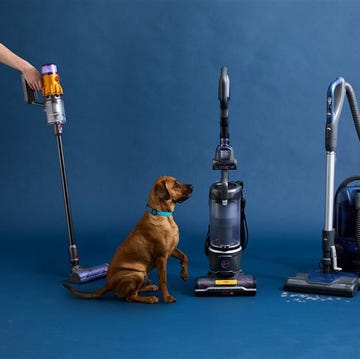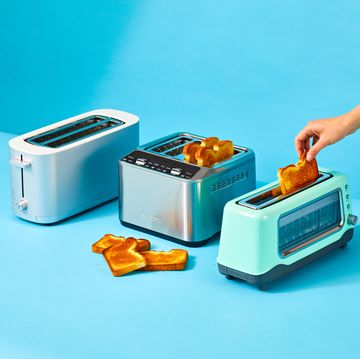Both the best canister vacuum cleaners and top-performing upright vacuums will do a great job gobbling up dust, crumbs, dirt and pet hair from the hard and soft flooring, upholstery and decorative surfaces in your home. And while you can't go wrong with either design, choosing the best vacuum cleaner for you and your home can make a big difference in how easy it is for you to keep your space spick and span.
We test all kinds of vacuum cleaners in the Good Housekeeping Institute Cleaning Lab, including the best hardwood floor vacuums, pet hair vacuums, cordless stick vacuums, hands-free robot vacuums and more. We evaluate them for how well they deep clean carpets, pick up debris from bare floors without scattering, remove pet hair from carpeting, how easy they are to use, empty and store and more.
When to choose a canister vacuum
With a canister vacuum, you clean with a lightweight wand and attachments while the machine's motor and dust receptacle sit behind you. Consider this versatile style if your home has multiple levels and stairs, all bare floors or a mix of carpets, low rugs and hard floors. They're also a good choice if you use your vacuum for many above-the-floor cleaning needs, like upholstery, bedding, lampshades and more.
Canister pros
- Very maneuverable
- Most have retractable cords and hidden tool storage
- Can be carried with two hands
- Easy to use on stairs
- Less prone to tipping
Canister cons
- Can take up more storage space
- Not all attachments may be stored on-board
- Small bags or dust cups can fill quickly
- May be unwieldy to pull and control during use
- Requires a motorized brush roll attachment to deep-clean carpets
When to choose an upright vacuum
If you'll be vacuuming mostly carpeting and your home is on one level, an upright vacuum is a great choice. Keep in mind that you'll be pushing the entire machine which can be a workout for some, especially with some upright vacuums weighing as much as 20 pounds. Also, consider an upright if storage space is tight, as most have on-board spots to stash the hose and tools and neatly wrap the cord.
Upright pros
- Excel at deep-cleaning medium and high-pile carpets
- Take up minimal storage space
- Many have easy-to-reach controls
- All attachments usually clip on-board
- Many offer features like adjustable nozzles, brush roll switches, hoses and lift-off canisters to improve versatility
Upright cons
- Can be heavy to push and carry
- Some may tip when using the hose and tools
- Awkward to maneuver into tight spaces and around corners
- May scatter debris or damage delicate floors
- Most don't have retractable cords
The Bottom Line: Canister or Upright?
Let your home's layout, floor covering choices and storage space be your primary factors when selecting a vacuum style. Uprights deep-clean carpets better while canisters offer more versatility. And uprights you push while canisters you mostly pull along. Both come bagged or bagless, and both offer models with HEPA filters for homes with pets or allergy sufferers. In large, multi-level homes, it's often prudent to have one of each — an upright that's kept upstairs for the bedroom carpets and a canister for downstairs where hard floors may be more common.
How we test canister and upright vacuums
With a custom-built, automated machine that makes the same number of passes over the same test carpeting, we objectively measure how well each canister and upright vacuum removes dirt deeply embedded into medium-pile carpet. We even have a separate machine to clean the carpets between test runs so one result won't influence the next.
We look at how well the vacuums remove large and small debris, like gritty sand and dried orzo pasta, from bare flooring, how well they clean along edges and how much suction they draw through the tools. We evenly spread industry-standard rayon fibers to simulate pet hair onto a carpet’s surface to see how well each machine cleans it up.
In addition to performance testing, we evaluate maneuverability, battery run-time for cordless models, the ease of using the controls and how simple it is to empty and clean the dust cup or to change the bag. We also factor in the weight of each model. All special features and claims are assessed, and we even give the owner's manual a grade for clarity.
Because maneuverability can feel different to each consumer, we have consumer testers rate the vacuums’ maneuverability by running them on a bare floor and carpet, around corners and under furniture. They rate the ease of removing the dust cups or bags and the ease of operating the vacuums’ controls. We also test any other features like brush roll control buttons, cord reels and other tools and accessories.
What to consider when shopping for a canister or upright vacuum
✔️ Bagged or bagless: Both types clean well. Bagless models come with a dust cup and filter that need frequent emptying and cleaning. The advantage is that you don’t have to stock up on bags or worry about running out of them. They can be messy to clean and empty, though, and may not be the best choice for those with dust allergies. Bagged vacuums are easier and neater to maintain and are great for allergy sufferers, as all dust and allergens remain sealed in the dust bag. All you do is toss the bag when it’s about ⅔ full. You do need to keep a supply of replacement bags on hand.
✔️ Filter: All vacuums come with multiple filters to trap dust particles and keep them from escaping into the air. Some are washable and made of simple foam, while others need replacing, which needs to be factored into the overall cost. The best-performing filters are HEPA filters that capture 99.97% of particles down to 0.3 microns in size. They come both washable and replaceable and are the best choice for homes with pets or allergy sufferers.
✔️ Size and weight: Canister and upright vacuums come in all sizes and weights. Compact, lightweight models are easy to carry and store and are best for cleaning small apartments and spaces. They usually lack some high-end features and include the most basic attachments. Full-size models are usually heavier to push and carry, but are also usually the most fully-featured with well-built bodies, durable constructions and all the bells and whistles for whole home cleaning.
✔️ Attachments: Tools give a vacuum versatility, and you should expect at least the basics, like a crevice tool and dusting/upholstery brush. A motorized power nozzle can help a canister clean deep-pile carpets and rugs more efficiently, and many full-size canisters and uprights now include tools such as a mini-turbo brush to get pet hair off furniture and a flat dusting brush to clean bookcase tops and ceiling fan blades. On-board attachment storage for any vacuum keeps tools from getting misplaced.
✔️ Extra features: Nice perks that make either a canister or upright vacuum easier to use include adjustable suction levels to more gently clean delicate items like window treatments, extra long cords and retractable cord reels, telescoping wands for longer reach and neater storage and fingertip controls for less bending. On uprights, we recommend getting one with a switch to turn off the brush roll when vacuuming bare floors and delicate carpets. Uprights with lift-off canisters to make above-the-floor cleaning easier are also worth a second look. And you'll find no-tangle brush rolls on many new uprights and canisters to keep long pet and human hair from clogging the rotating brush.
Why trust Good Housekeeping?
Carolyn Forté has tested and reviewed hundreds of vacuum cleaners, carpet cleaners, mops and other major (and small) home appliances as executive director of the Home Care Lab. She oversees all testing and editorial done in the Cleaning Lab and recently tested all of the handheld, stick, upright and canister vacuums that were submitted for consideration in the most recent Good Housekeeping Best Cleaning and Organizing Awards. She is an active member and second vice chair of the ASTM Committee on vacuum cleaners and chairman of the consumer information sub-committee. This industry group develops the standardized test protocols used by manufacturers and others for testing vacuum cleaners. Personally, she's pro canister though she does keep an upright handy on her home's second level for deep-cleaning bedroom carpets.
Carolyn Forté brings more than 40 years of experience as a consumer products expert to her role as executive director of the Good Housekeeping Institute's Home Care and Cleaning Lab. Using deep analytical testing and writing expertise in appliances, cleaning, textiles and organizational products, she produces cleaning and home care advice for GH, has authored numerous books and bookazines for the brand and partners with the American Cleaning Institute to co-produce the Discover Cleaning Summits. She holds a bachelor's degree in family and consumer sciences from Queens College, City University of New York.
